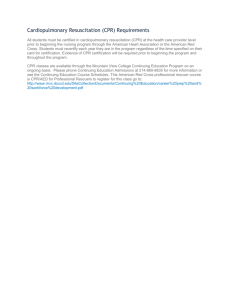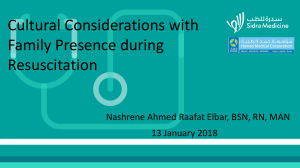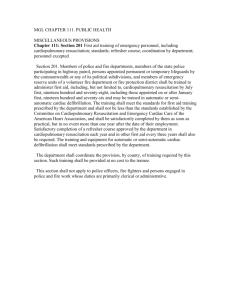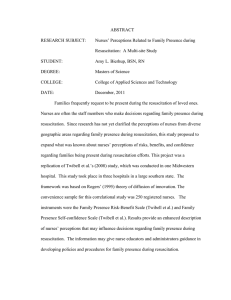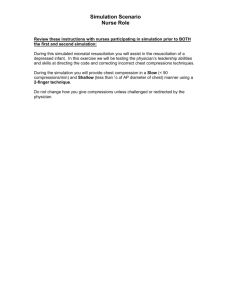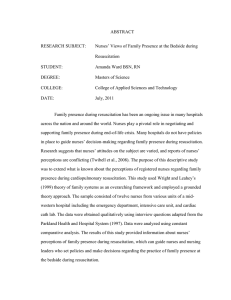Cardiopulmonary Resuscitation (CPR) Simulation
advertisement
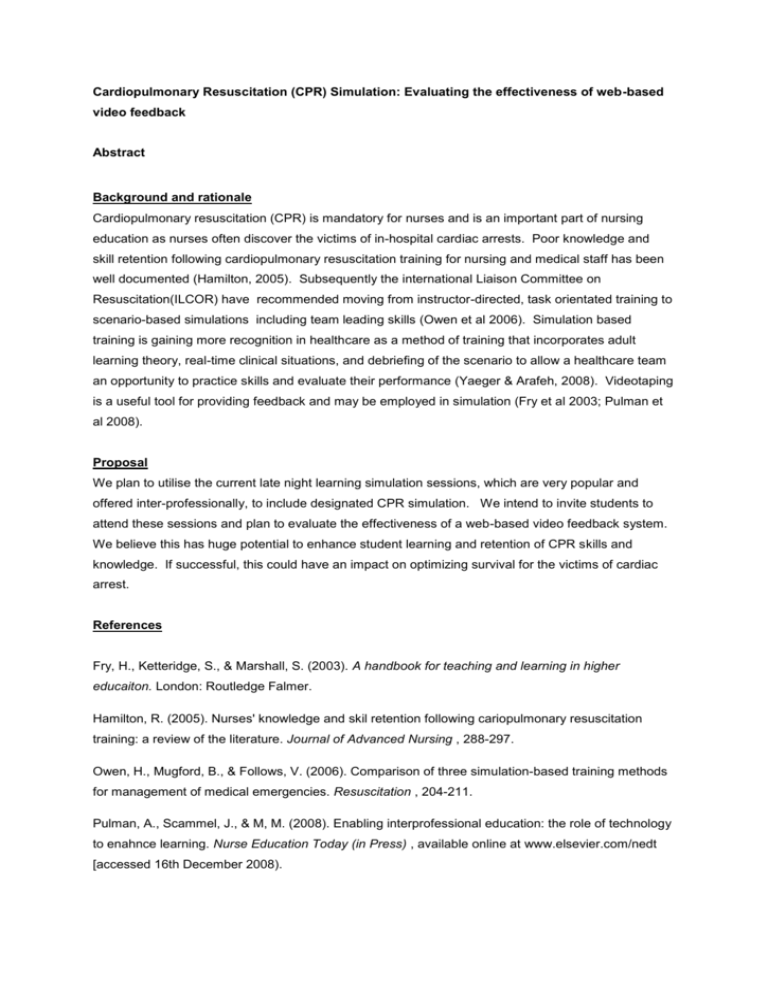
Cardiopulmonary Resuscitation (CPR) Simulation: Evaluating the effectiveness of web-based video feedback Abstract Background and rationale Cardiopulmonary resuscitation (CPR) is mandatory for nurses and is an important part of nursing education as nurses often discover the victims of in-hospital cardiac arrests. Poor knowledge and skill retention following cardiopulmonary resuscitation training for nursing and medical staff has been well documented (Hamilton, 2005). Subsequently the international Liaison Committee on Resuscitation(ILCOR) have recommended moving from instructor-directed, task orientated training to scenario-based simulations including team leading skills (Owen et al 2006). Simulation based training is gaining more recognition in healthcare as a method of training that incorporates adult learning theory, real-time clinical situations, and debriefing of the scenario to allow a healthcare team an opportunity to practice skills and evaluate their performance (Yaeger & Arafeh, 2008). Videotaping is a useful tool for providing feedback and may be employed in simulation (Fry et al 2003; Pulman et al 2008). Proposal We plan to utilise the current late night learning simulation sessions, which are very popular and offered inter-professionally, to include designated CPR simulation. We intend to invite students to attend these sessions and plan to evaluate the effectiveness of a web-based video feedback system. We believe this has huge potential to enhance student learning and retention of CPR skills and knowledge. If successful, this could have an impact on optimizing survival for the victims of cardiac arrest. References Fry, H., Ketteridge, S., & Marshall, S. (2003). A handbook for teaching and learning in higher educaiton. London: Routledge Falmer. Hamilton, R. (2005). Nurses' knowledge and skil retention following cariopulmonary resuscitation training: a review of the literature. Journal of Advanced Nursing , 288-297. Owen, H., Mugford, B., & Follows, V. (2006). Comparison of three simulation-based training methods for management of medical emergencies. Resuscitation , 204-211. Pulman, A., Scammel, J., & M, M. (2008). Enabling interprofessional education: the role of technology to enahnce learning. Nurse Education Today (in Press) , available online at www.elsevier.com/nedt [accessed 16th December 2008). Yaeger, K., & Arafeh, J. (2008). Making the move from traditional neonatal education to simulationbased training. J Perinat Neonat Nurs , 154-8.


